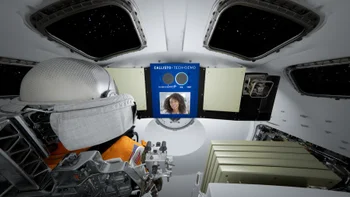NASA is sending Amazon Alexa on a mission in space

Amazon and Lockheed Martin, a NASA contractor, announced that Amazon Alexa would be a part of NASA's Artemis I space mission. Alexa will be used on Orion, a spacecraft of NASA, as part of the Callisto payload, which will be inserted in the spacecraft.
Alexa will have access to the spacecraft's systems and telemetry data during the mission. For example, Alexa will be able to respond to questions such as "Alexa, what's the temperature in the cabin?" and will have access to ship-connected devices such as the in-cabin lighting.
NASA will also give Alexa access to its Deep Space Network, which will enable Alexa to get all sorts of information from Earth, like news briefings and sports scores. This feature will allow astronauts to stay informed about what is going on in the world while in space, allowing them to feel more connected to home. According to Amazon, Alexa's voice interactions will make the crew's life easier and more efficient.
Aaron Rubenson, vice president of Amazon Alexa Everywhere, stated, "The Star Trek computer was part of our original inspiration for Alexa, so it’s exciting and humbling to see our vision for ambient intelligence come to life on board Orion."
During the Artemis I mission, users who are using Alexa-compatible devices will be able to get information about the mission. Customers will have access to Orion's telemetry data, as well as videos and photos from the mission. Amazon stated that a live stream during the launch will also be accessible and that customers with Alexa-compatible devices will be able to see videos of the space interactions with Alexa.
Amazon will launch the new Alexa features when the mission time is near, but right now, there is a preview that can be accessed on an Alexa-compatible device. In order to access the preview, you will need to say, "Alexa, take me to the Moon."
By using Alexa in its Artemis I mission, NASA wants to test how ambient intelligence can help astronauts in space. Artemis I will kick off a series of missions aiming to land the first woman and person of color on the Moon.
For more details about Alexa's participation in Artemis I, visit Amazon's "Alexa, take me to the Moon" page
Alexa will have access to the spacecraft's systems and telemetry data during the mission. For example, Alexa will be able to respond to questions such as "Alexa, what's the temperature in the cabin?" and will have access to ship-connected devices such as the in-cabin lighting.
Artemis I will be an uncrewed mission, and in order to test Alexa in space, NASA will use remote access to Callisto through the Mission Control Center. From there, NASA will be able to interact with Alexa and create a virtual crew experience. Everything that happens on board the spacecraft will be recorded and sent back to Earth, where engineers will analyze the data and improve the technology for future missions.
During the Artemis I mission, users who are using Alexa-compatible devices will be able to get information about the mission. Customers will have access to Orion's telemetry data, as well as videos and photos from the mission. Amazon stated that a live stream during the launch will also be accessible and that customers with Alexa-compatible devices will be able to see videos of the space interactions with Alexa.
By using Alexa in its Artemis I mission, NASA wants to test how ambient intelligence can help astronauts in space. Artemis I will kick off a series of missions aiming to land the first woman and person of color on the Moon.
For more details about Alexa's participation in Artemis I, visit Amazon's "Alexa, take me to the Moon" page










Things that are NOT allowed: